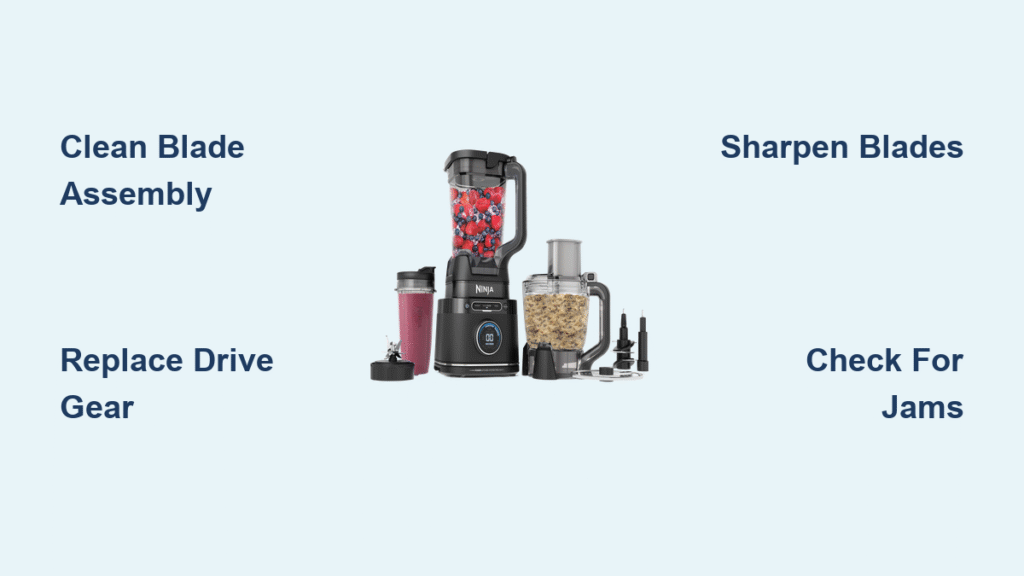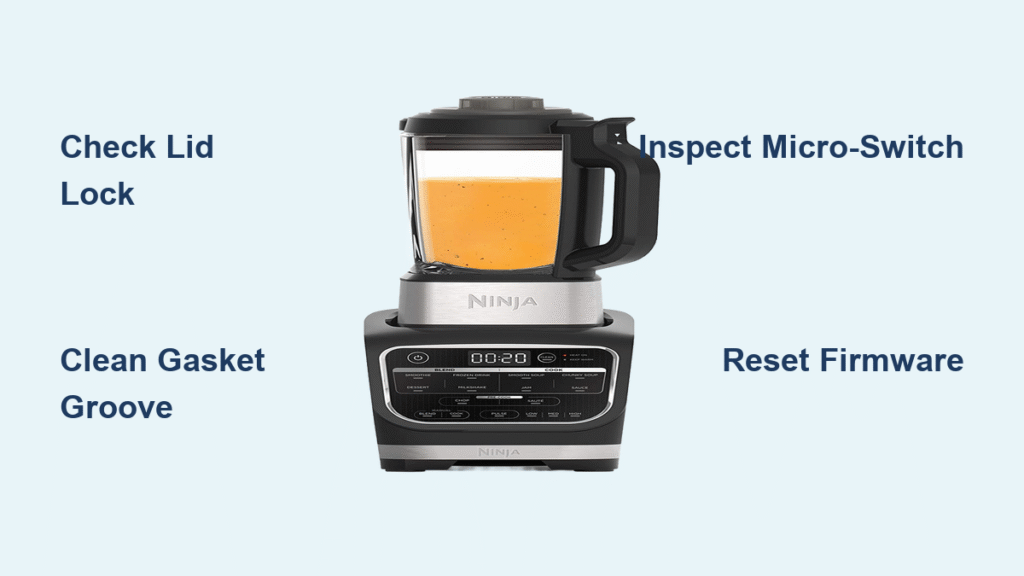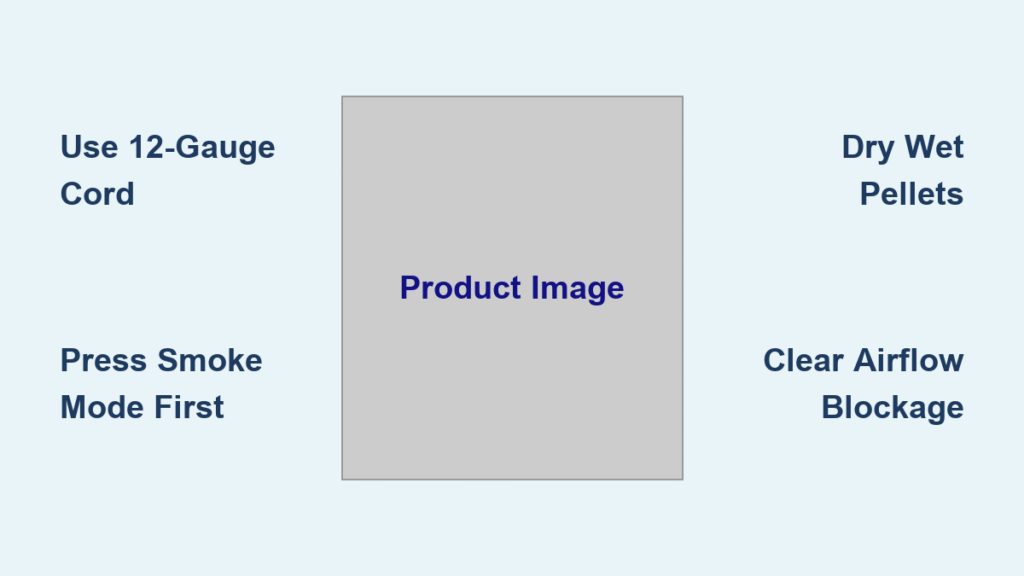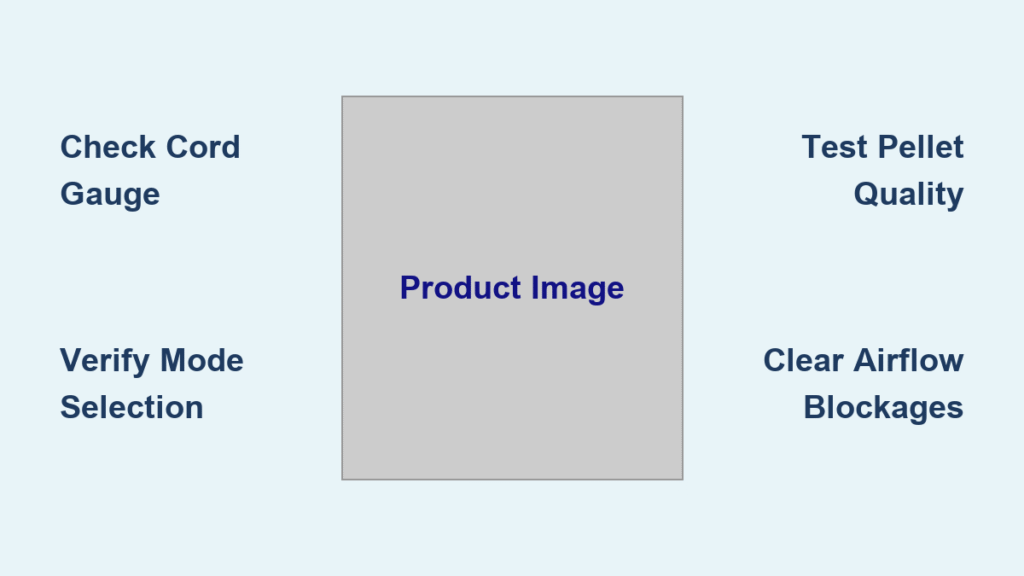Your Ninja blender powers on with its signature roar, but the blades stay frozen while your kale and frozen berries laugh from the pitcher. This maddening scenario strikes thousands of Ninja owners weekly, yet 90% of blade failures stem from preventable issues you can fix before your coffee gets cold. Whether you’re battling peanut butter cement trapped between blade layers or a stripped drive gear from years of frozen margaritas, this guide delivers battle-tested solutions that restore your blender’s power without costly repairs. Stop wasting money on replacement pitchers—most Ninja blade problems vanish with proper cleaning or a $5 part swap.
Diagnose Why Your Ninja Blades Won’t Spin
Motor Runs But Blades Stay Frozen
When your Ninja’s base hums while blades remain motionless, three culprits dominate. Overheating protection automatically shuts down the motor after 60+ seconds of continuous use—wait 15-30 minutes for the safety feature to reset. Food debris jams occur when sticky blends like hummus or nut butter harden between blade tiers, creating a solid barrier. Stripped drive gears show as plastic shavings around the motor shaft or grinding noises during operation. Skip the guesswork: Unplug the unit, remove the pitcher, and try spinning the blade assembly by hand. If it moves freely, your drive gear needs replacement. If it’s locked solid, debris removal is your first priority.
Wobbling Blades That Shake Your Countertop
Excessive vibration during blending often signals bearing failure. Grab your blade assembly and shake it gently—minimal wiggle is normal, but movement wider than a credit card means the bearing is shot. Inspect the plastic housing where blades meet the base for hairline cracks, especially near the drive coupling. A failing gasket appears as black residue streaks or visible tears around the blade shaft. This isn’t just annoying—unbalanced blades can crack your pitcher during high-speed blending.
Dull Blades That Mash Instead of Blend
Run your finger carefully along the blade edge (never across it). Sharp blades catch skin slightly; smooth edges won’t slice paper cleanly. Check for nicks from accidental spoon drops or bent blades from overloading with ice. Bent blades create uneven vortexes that leave chunks in your smoothies. If blades deflect when pressed with a spoon, replacement is unavoidable—sharpening won’t fix structural damage.
Clean Jammed Blade Assemblies in 15 Minutes

Disassemble Without Damaging Components
Always unplug your blender first—this prevents accidental activation during cleaning. Twist the pitcher counterclockwise to lift it off the motor base. Flip it upside down on a towel and rotate the blade assembly counterclockwise (most models require a firm quarter-turn). If stuck, wrap a rubber grip around the blade base for extra torque—never use pliers that could crack the housing. For Nutri Ninja cups, unscrew the bottom cap instead of twisting the blades.
Dissolve Hardened Residue Fast
Fill your sink with hot water and two drops of dish soap—not boiling, which warps plastic. Submerge the blade assembly for 10 minutes to soften dried smoothie buildup. Use a soft bottle brush (never steel wool) to scrub between blade layers, focusing where blades meet the plastic housing. For peanut butter or tahini residue:
– Make a paste with 1 tbsp baking soda + 1 tsp water
– Apply to clogged areas and wait 5 minutes
– Scrub with an old toothbrush using circular motions
– Rinse under hot running water until water runs clear
Pro tip: Add ¼ cup white vinegar to the soak water to break down mineral deposits from hard water.
Dry Thoroughly to Prevent Rust Damage
Trapped moisture causes bearing corrosion that kills blades faster than food debris. Shake the assembly vigorously to expel water from crevices. Use a lint-free microfiber cloth to dry every surface, including the drive gear socket on the motor base. Never reassemble until completely dry—air-dry for 30 minutes minimum. Skipping this step invites rust that seizes blades permanently.
Replace Stripped Drive Gear Couplings
Access the Motor Base Safely
Flip your blender base upside down and pop off rubber feet with a flathead screwdriver’s edge. Remove the hidden screws underneath, then lift the base plate while noting wire positions. The plastic drive gear coupling sits directly under the pitcher connection point. If you see white plastic shavings or stripped teeth, replacement is urgent—continuing to use it damages the motor shaft.
Install New Coupling Correctly
Align the new coupling’s flat side with the motor shaft’s flat edge—mismatched alignment causes immediate failure. Press down firmly until you hear a distinct click indicating full seating. The coupling must sit perfectly flush; any gap causes wobble. Reattach the base plate, screws, and rubber feet. Test by placing the blade assembly on the base—it should lock with zero play.
Warning: Using non-OEM couplings (part #311KKU3210) risks improper fit. SharkNinja’s official part costs $8 and fits all models post-2015.
Sharpen Blades Without Ruining Them

Hand-Sharpen Safely at Home
Secure the blade assembly in a vise with rubber jaws or wrap it in a thick towel. Hold a fine diamond file at a precise 20-degree angle against each blade edge. Apply 3-5 smooth strokes per blade, moving away from the edge. Test sharpness by slicing printer paper—if it tears unevenly, repeat sharpening. Never sharpen while attached to the pitcher—this causes dangerous slips.
Know When to Replace Instead
Sharpening fails for blades with bends, cracks, or visible metal loss. Bent blades can’t be rebalanced and create destructive vibrations. Replacement blade assemblies ($20-$40) restore performance better than sharpening severely worn units. Nutri Ninja Pro models (BL450/455) require specific part #315KKU640—using generic assemblies voids safety certifications.
Prevent Future Blade Failures
Daily Habits That Extend Blade Life
Rinse blades immediately after blending—dried smoothie turns to concrete in 30 minutes. Hand-wash assemblies instead of using dishwashers, which degrade bearings through heat cycles. Store blades upright in a protective sleeve, never stacked with heavy items that bend edges. Always add liquid before solids to reduce startup strain on blades.
Critical Monthly Maintenance
- Soak all parts in 1:3 vinegar-hot water solution for 15 minutes
- Inspect drive gear for plastic shavings
- Replace gaskets annually (leaks accelerate bearing failure)
- Apply one drop of food-grade lubricant to the motor shaft
Pro tip: Pulse frozen ingredients instead of continuous blending—this reduces blade stress by 70%.
Safety Essentials You Can’t Skip
Blade Handling Rules
Always wear cut-resistant gloves when handling assemblies—Ninja blades slice skin instantly. Keep blades pointed away from your body during cleaning. Never test sharpness with bare fingers; use paper or a tomato skin instead. Store disassembled blades in a designated container, not loose in drawers.
Operational Safety Must-Dos
Never blend without the lid locked—food ejection causes 200+ ER visits yearly. Avoid overfilling past the max line, which forces ingredients into the drive mechanism. Let the motor cool 2-3 minutes between 60-second blends. If smoke appears, unplug immediately and contact SharkNinja—this indicates serious motor damage.
Find Exact Replacement Parts

Match Your Model Correctly
Using wrong parts creates dangerous mismatches. QB3000SS fits Professional series (BL660/BL740), while QB1004 works with Mega Kitchen System (BL770). Nutri Ninja Pro models (BL450/455) require 315KKU640. Check your pitcher’s bottom for the model number—never guess. SharkNinja’s website has a part finder tool that prevents costly mistakes.
Where to Buy Genuine Parts
Purchase from SharkNinja’s official site for 90-day warranties and compatibility guarantees. Amazon third-party sellers often list counterfeit couplings—check for “Ships from/Sold by Amazon” only. Local appliance shops like Repair Clinic stock popular assemblies for immediate pickup. Avoid eBay parts—30% fail within weeks per Consumer Reports.
Quick Troubleshooting Reference
| Problem | Immediate Fix | Time Required |
|---|---|---|
| Blades stuck solid | Hot water soak + baking soda scrub | 15 minutes |
| Grinding noise | Replace drive gear coupling | 25 minutes |
| Poor ice crushing | Sharpen or replace blades | 20 minutes |
| Leaking pitcher | Install new gasket kit | 10 minutes |
| Excessive vibration | Tighten blade assembly or replace bearing | 15 minutes |
Extend Blade Lifespan Like a Pro
Pulse frozen ingredients instead of continuous blending to reduce blade stress. Never blend hard items beyond ice cubes—coffee beans and nuts destroy edges in minutes. Replace blade assemblies every 12-18 months with daily use, or immediately if performance declines. Professional sharpening extends life by 6 months but eventually replacement becomes essential.
Bottom line: 80% of Ninja blade failures stem from improper cleaning or delayed maintenance—not broken parts. Your $150 blender deserves the 15-minute weekly care that prevents $50 repair bills. Start with the deepest clean you’ve ever given those blades, then implement the monthly maintenance checklist. Within one smoothie cycle, you’ll hear that satisfying whir of perfectly spinning blades—and never waste another ingredient again.





